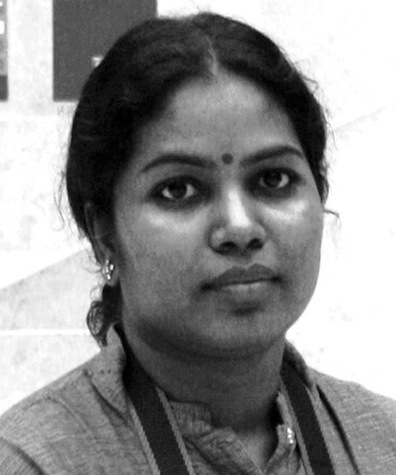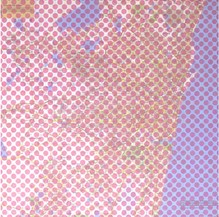
-
From 19 Apr-2016 To 30 Apr-2016
-
From 31 Jan-2018 To 03 Feb-2018
Award for excellence, Yali Art Foundation, Chennai (2002); Lalit Kala Akademi academic scholarship for young artists (2000-1); Master of Fine Arts acquired from Madras Government College of Arts & Crafts, specialising in Painting and Printmaking (1999); Ovia Nunkalai Kuzhu Award, Chennai (1997)
†
Selected Exhibitions
'More than Once' Solo Exhibition, Focus Gallery, Chennai (2010); 'Chennai revisited', The Noble Sage Art Gallery, London (2010); She, India: India through the Eyes of its Women', The Noble Sage, London (2007); 'Transfer', Alliance Francaise, Chennai (2007); 'Explorations', National Museum of Women in the Arts, India(2007); 'Women@rt', Forum Art Gallery, Chennai (2005);† 'Tune in 96.06', Alliance Francaise, Chennai (2006); 'Sum of Infinity', Alliance Francaise, Chennai(2005); National Exhibition of Art, Lalit Kala Akademi (2000, 2001, 2003, 2004, 2006); Adogi International Exhibition of Miniprints, Spain (1997, 1999-2001);'Sum of Infinity', Lalit Kala Akademi, Chennai (1999); Ovia Nunkalai Kuzhu Young Artists Exhibition, Chennai (1997); All India Fine Arts & Crafts Society, Lalit Kala Akademi Regional Centre, (1997); Group Exhibition, Maxmuller Bhavan German Consulate, Chennai (1996); Regional Art Exhibition, Chitra Kala Samsed, Andhrapradesh (1996); 6th All India Fine Arts Exhibition, Chitra Kala Parished, Karnataka
Originally drawn toward a profession in architecture through her interest in space and the qualities of different materials, Anamika found greater expressive freedom as a visual artist and is well on her way to make her mark as an Indian contemporary woman artist of great pedigree. Her recent work is the latest development in an artistic journey which started with a series of well-received abstract paintings that deciphered spatial relationships through minimal colour, texture and line. She described herself as 'from the start, very comfortable with non-representation', the 'play of possibilities of line, space and form were enough to busy me'. In her next series of works, colour was deducted from the mix, and the architecture of her surrounding world became rendered in three-dimensional, abstract wall sculptures that relied most on the changing light falling upon them. For The Noble Sage, Anamika employed a new technique she describes as 'transference' (see works in the gallery titled I am proud/love to be with you all). While applying everyday sticky tape to a newspaper, she became interested in the partial transfer of the top layer of the newspaper to the tape; the way that it left the original newspaper intact though at the same time made a 'transfer print' on the sticky vinyl. In her final works she tread carefully the line between transference and collage of found objects. In her creation of the works she discussed how each piece is a loving documentation of the surface world around her. This fascination with surface continues in her new body of work. Here, it is the dot that becomes all-powerful: an emblem of multiplicity, repetitiousness, the pixelated vision and the visual metaphor she employs to resonate the single mantra within the act of chanting. Unlike afamed artist Bharti Ker who also employs the dot (as a bindi) in her work, Anamika is interested in the repetition of the dot in minutely different forms both creating a surface as well as penetrating the surface, opening up 'possibilities to explore' just as chanting does for those that meditate. As Anamika puts it, the repetition of the dot is an artistic process that 'effaces the I'. In 'Amorphous Carbon' I & II (2008) Anamika uses the black soot pigment found in traditional Keralan painting to create the dot: 'it's a very authentic medium, and holds a kind of old-age attitude so pure and genuine'. The black pigment is traditionally gathered through the burning of mustard seed oil to create a usable soot. In these pieces Anamika draws together the past and the present, matter and its residue, similarity and variety. In 'Four Colour Separation...' (2008), Anamika's dots are used to convey the complexity of emotion and its conveyance through two-dimensional representation. She states: 'There is no special liking for or dislike of something, even a bomb blast, death, disaster, flood, love, emotion, pain,... everything is just two-dimensional dots at the final point of a journey. Anamikas special vision makes her a formidable artistic force in South Indian contemporary art.








